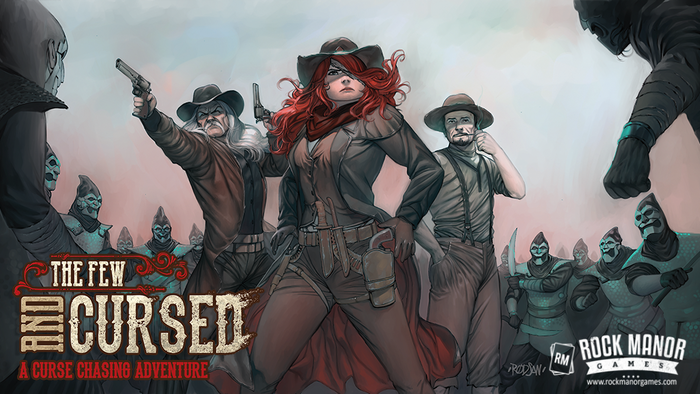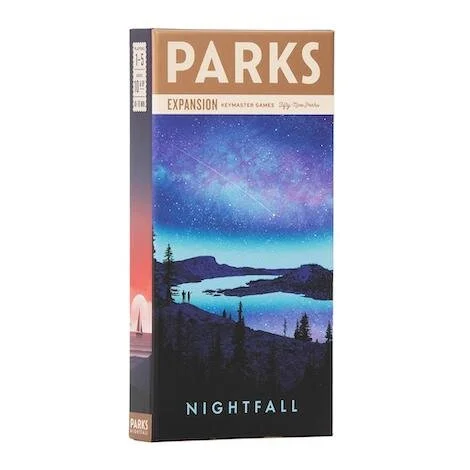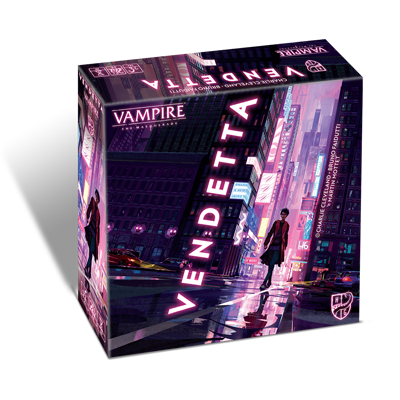Review copy provided by Draco Ideas
Five years ago, designer Proyecto Enigma and publisher Draco Ideas released 2GM Tactics, a card-based wargame that replaced the miniatures and physical components of a tabletop wargame with cards, tokens, and accessibility. It retains all of the strategies present in a miniatures wargame without some of the upfront cost and long-term investment. It’s a deck-building game based on a points system and it’s set within World War II, the classic historical era for a lot of these games.
Fighting as the Americans or the Germans, players will experience gameplay split between traditional one-on-one encounters as well as historical scenarios that emulate real battles and specific fighting conditions.
And while there are two expansions, opening up the Eastern Front and the African theater of war, the core game is five years old and that’s quite a long time in board game years. Especially in the last decade, with all of the new releases that appear each year.
So, Proyecto Enigma and Draco Ideas have returned for 2GM Pacific, a reimplementation of the original design, modified by five additional years of design experience and new ideas that shape this game into a more refined product. The setting this time? The Pacific theater of war and the fight between the Americans and the Japanese.
How does the 2020 release fare? The terrain in the tabletop industry is quite different and Kickstarters are even more competitive, luxurious, and expensive. Where does this wargame land amidst the crowd?
STORY
It may be 80 years in the past, but the Second World War has never really left our collective mind. There are too many cultural references, movies, games, books, and other tangible reminders of that global conflict. And Proyecto Enigma has told the story of the fight in Europe and Africa. The original 2GM game and expansions covered those theaters of war.
What’s left is the struggle in the Pacific between the United States military and the dug-in, relentless forces of the Imperial Japanese Army.
That’s where 2GM Pacific comes in. One last chapter in the story. One last part of the globe to pull into the fray. For the players who engage with this tabletop clash, though, there are two possibilities: retreading history in battles that are remembered from the past or simulating new battles with the same troops and environment that affected the real war.
Live history or be doomed to repeat it with variations on historical scenarios. I think that’s the line…
GAMEPLAY
What’s changed from 2GM Tactics?
The box is bigger—along with the foldable game board—and the artwork is more vibrant. More importantly, though, the rules have been updated, new Pacific Ocean scenarios have been written, and the solo mode has been reinforced with sandbags, ammunition, and the efforts of a few good men. A lot of people, to be more accurate and to lean away from low-hanging pop culture references…
While the complexity of the deck-building and card-drafting is more elegant, the focus of the game is not. Two sides fight and one will win. That’s the goal. That’s the point of the game. It’s a tabletop wargame that acts as a standalone expansion to the 2GM series, in which one to four players build an army, field them, and then vie for control of the terrain and the battle by intelligent decisions regarding the deployment, movement, and engagement of these troops.
Deploy units on the board, upgrade them during the battle, and command them with generals from your headquarters. Whether you’re creating a custom battle against an opponent or stepping into the shoes of real officers and soldiers during a historical engagement, the mission is the same: weaken the enemy and win the fight before you succumb to their own dedicated push against you.
The deck-building is quite involved because it requires knowledge of the cards and how they interact with each other. Learning that will be an uphill battle but once you’ve discovered the right combinations, it can be quite exhilarating.
The combat, unfortunately, is not as sophisticated. Players must consider range, accuracy, cover, armor-piercing capability, and damage. At the end of the day, though, it all comes down to a roll of the die. While that does its own job of simulating misses, weapon jams, and all of the other variables that make warfare a thorny and dangerous proposal, it still can feel jarring and frustrating whenever you miss an opponent outright with a strong unit or one of your troops is instantly killed by a lucky critical hit. If you don’t like random chance in your games, then the combat in 2GM Pacific will not appeal to you. It’s definitely not for everyone.
On the flip side, if you’re reading this and you like wargames and don’t mind the typical mechanics that accompany those games, then there won’t be much here to rattle you. Likely, there will be a lot to incentivize you.
For myself, I don’t mind rolling dice as part of an attack. I prefer games where dice are just one aspect in a multi-pronged approach to combat. Take Forbidden Stars, for example. Dice are a vital element in the fight, but the cards that you play are key to winning the encounter. The right cards can mitigate a poor dice roll and claim victory all on their own. That gives the player more control over tactics and overall strategy. I appreciate that nuanced approach.
2GM Pacific doesn’t possess that level of design, in my opinion, but the dice-rolling doesn’t dissuade me enough that I consider this a point of contention that overrides all else.
It’s just something that you need to know. At its core, this game is a deck-building war simulation that depends on dice rolls to win or lose during combat. Bringing the right troops is part of the decision-making process. Engaging the right enemy units is key. Bolstering your units with the proper support cards could make or break a firefight. But you will always have to rely on the dice.
Stepping away from design and into a discussion of the game variants, I will say that I’m not much of a solo gamer, so I didn’t explore the AI deck and that part of 2GM Pacific as I did the Pitched Battles and Historical Scenarios, but if you’re the kind of player that alternates between small player counts and solo play, then there is a sizable amount of content stuffed into the game that you’ll appreciate. And that massive sentence is a pretty good reflection of the sheer quantity of cards tucked into this box and the replay value that can be extracted if you appreciate the theme and style of the game.
There’s a lot that I wish were different, but there is still a lot that’s good here.
VISUALS
I appreciate the interplay of attention to historical detail and the vivid illustrations depicting both sides of this massive conflict over land and sea. Each card (though there are multiples of certain cards) is unique in its artwork and it looks like a visual improvement over what came in 2GM Tactics.
However, graphic design could be much better. The board (and some of the other components) features both English and Spanish text, which clutters up the look of the game and detracts from clarity when trying to read and play at a glance.
Tokens, which are necessary to augment troops on the battlefield, can be dual-sided for one ability or double-sided to accommodate two different abilities. This makes sifting through the pieces laborious when you’re looking for that one particular token side. The card text is so small that it requires focus and would definitely induce eye-strain if not played in the best lights. Both the tokens and the card text, though, make it difficult for players to easily assess what the opponent has and is capable of, which is incredibly important in a wargame like 2GM Pacific.
Without disrespecting the artwork from Matias Cazorla, the rest of the visual design in the game is lacking and it makes an already complex game needlessly more inscrutable.
REPLAYABILITY
This is where the game comes into its own. There are Pitched Battles for players to test their military might and mettle. There is a campaign with five Historical Scenarios that recreate the events of the Pacific Ocean Theater. A solo mode instructs how to make an AI deck and engage in combat with a shadow opponent. Advanced rules introduce more wartime minutiae that should satisfy those with a proclivity for historical detail and tactical complexity. And then the cards. Just so many cards. Way more than you have during one game. So players will be able to mix and match and discover what kind of deck they enjoy most.
Do you want an infantry-heavy force of banzai-charging and bayonet-fixing Japanese soldiers? You got it (in my best Kevin McAllister voice). What about the B-17 Flying Fortress? Yes, you can bomb the absolute hell out of whatever you want if you manage to get that thing on the field.
The replay value of 2GM Pacific is what saves the game for me. I can’t dismiss the depth that exists here. A wargamer could stay happy for a long time with the contents of this box. With some focus on other areas that need shoring up, the rest of the game could rise to the success of the variability present within 2GM Pacific.
WHAT IT COULD HAVE DONE BETTER
2GM Pacific requires a superficial overhaul that addresses visual clarity and accessibility. If it’s going to attract players other than dedicated wargamers, then there needs to be a better presentation of the mechanics and a consideration of how the components and the rules are physically translated onto the board.
Yes, there is a dense amount of gameplay contained within the box. It’s got replay value written all over the deck-building tactical combat. It boasts a strong two-player experience and a historical campaign for solo gamers to discover.
But it trips over its own feet from a design standpoint. It needs to look to other games with more thorough production and graphic design expertise in order to achieve a wider reach. A second edition of this game could more deeply penetrate the wargame, and general tabletop, market.
VERDICT
Is this game worth it? That’s a tough question and it really comes down to the kind of player you are.
Wargamers, especially, would enjoy the deep level of strategy and tactic variability in 2GM Pacific. The massive decks ensure that you’re going to have a wide array of possibilities in the units and support cards that you integrate into your deck each game. Infantry, transport vehicles, armored units, planes, generals, and numerous kinds of support cards (both general and faction-specific) combine to make an always-fresh military experience. And those gamers are the least likely to balk at the sometimes wonky interplay of the game’s mechanics and the available components.
For board gamers who also enjoy digital games, then I think I’d be hard-pressed to recommend this over something like KARDS, which is a free-to-play tactical card game that feels very similar, but functions much more smoothly than 2GM Pacific… and happens to be free. It’s akin to me never playing Twilight Struggle in person when I could just play the digital edition. It takes away a lot of the mess and mathematical juggling. That’s even more poignant when I think about the cost of the game. My version, which contains the U.S. and Japanese armies, as well as four mini expansions, would have cost a backer over $100 on Kickstarter. That’s a steep price to pay when there are equivalent (or even better) experiences to be had for less (or free).
And for everyone else, it’s a close call. My biggest compliment to 2GM Pacific is the staggering depth that the game possesses. Unit diversity and gameplay variations will accommodate hours of playtime with very little to no repetition. Opponents might find deck combinations or particular units that they favor, but the terrain composition and the presence of unit modifiers through upgrades really counter any monotony.
However… there are some quirks to this game that many players may not be able to stomach. The constant use of tokens, the innumerable upgrades or unit abilities, and the small-text density of the game in general leaves you wanting. The graphic design and manifestation of the mechanics as tiny components—for players to find, manipulate, and consider at all times—are a weak point that could be crippling to someone’s interest in the game.
I like what I feel when building a deck and when scoring critical hits in combat. I like what I recognize to be high replayability. I enjoy games with military themes and strategic competition. But there are hurdles here that make me pause. I’m willing to forgive most of them. Other players won’t be so lenient.
For wargamers and the unafraid, 2GM Pacific will satisfy your desire to crawl into a foxhole and get dirty while fighting the entrenched enemy across the table from you. For other gamers, it will likely make you leave the frontline, leave the trenches, and sit down, a little shell-shocked and a little hopeful for something more approachable.























